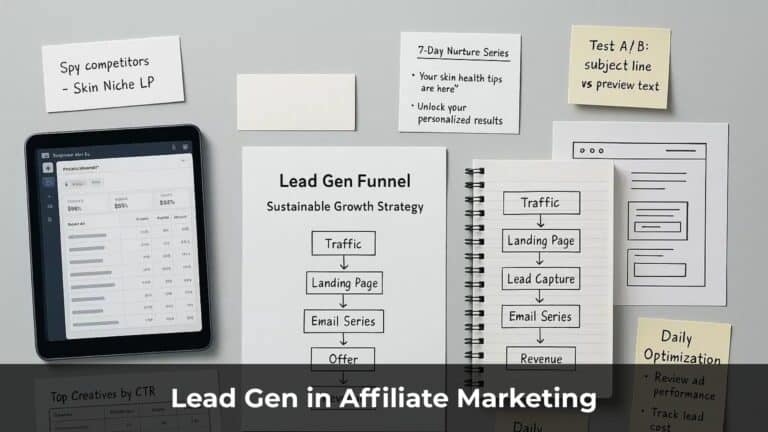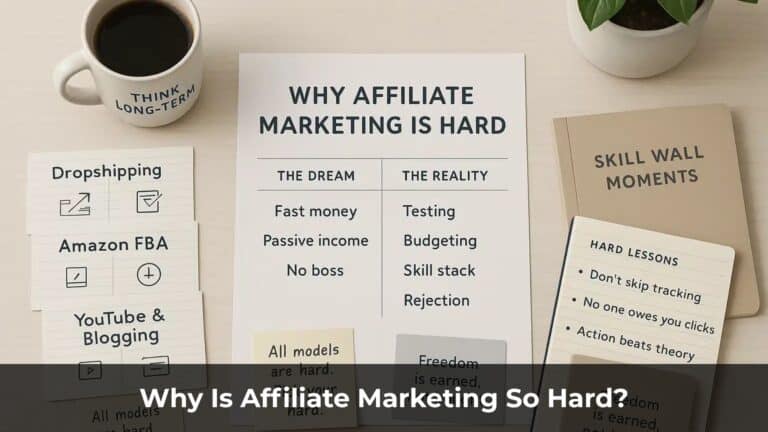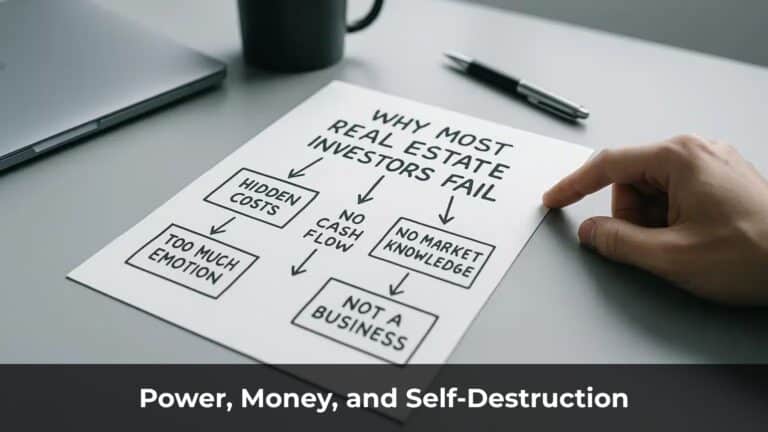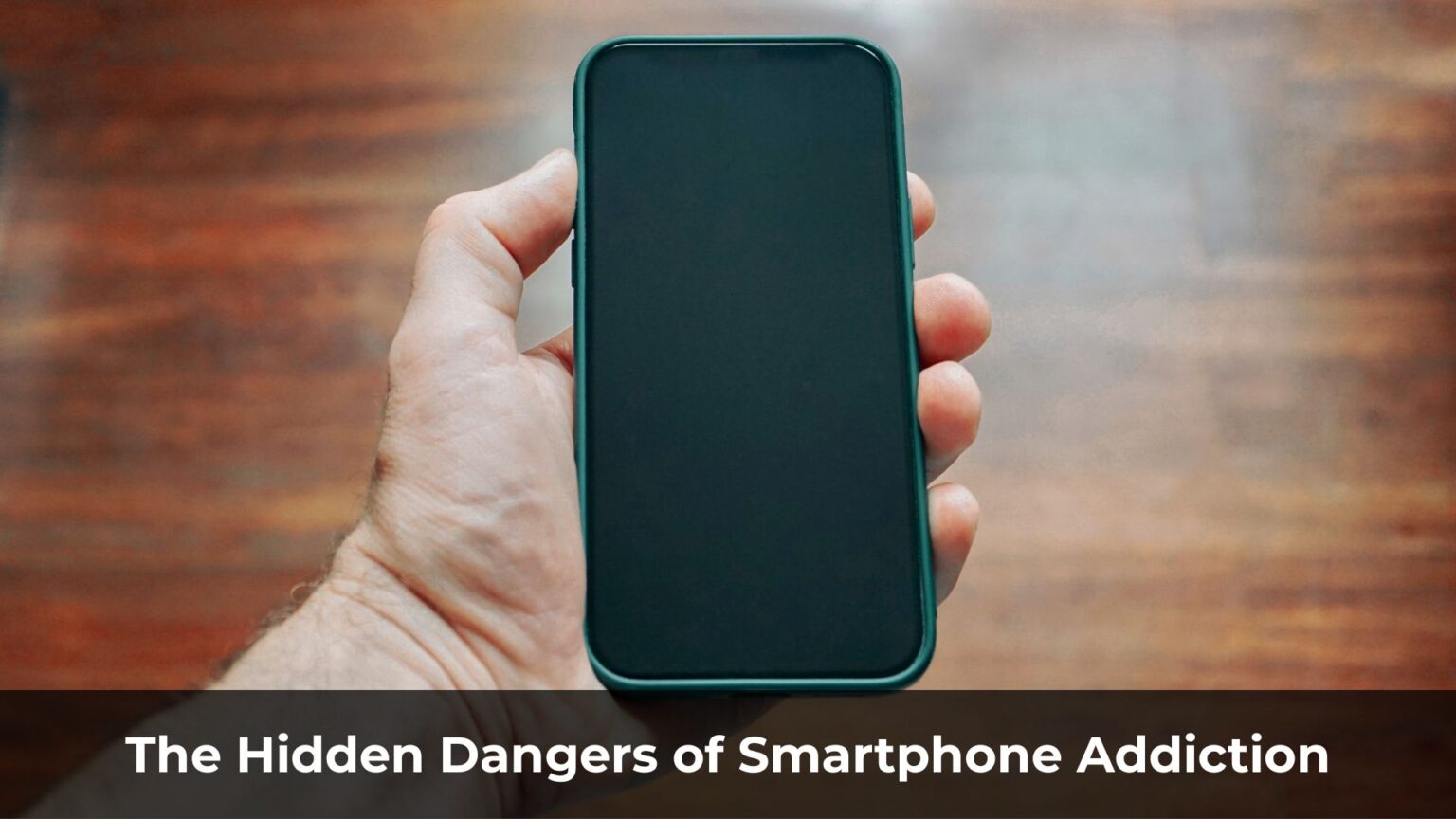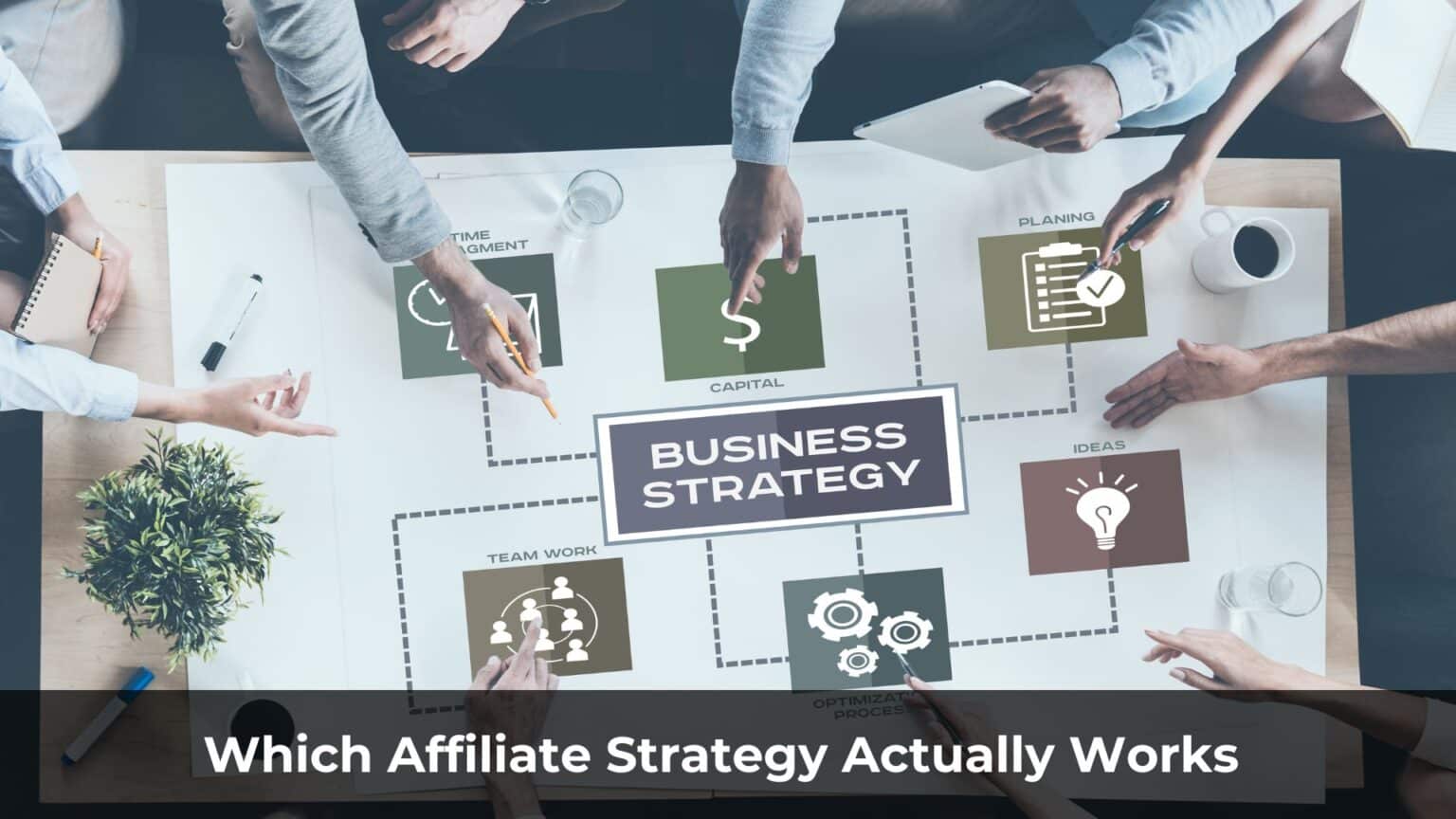I handed over full control of my affiliate campaigns to my team — not because I gave up, but because I was ready for the next level.
Instead of micromanaging campaigns day after day, I stepped out of my comfort zone and launched an entirely new company. It was a bold move, especially for someone who had been constantly busy just trying to keep things running.
But here’s the truth: growth never comes without challenge.
Pushing myself forward forced me to learn faster, think bigger, and lead better. Over the past year, I’ve gained lessons that no course or guru ever taught me — lessons forged through real decisions, real pressure, and real growth.
In this post, I’ll share the most important insights I’ve gained — so you can learn them in minutes, not months.
Table of Contents
ToggleIf You Want to Succeed – Learn to Say No to Opportunities
Mark Cuban once said, “You can drown in opportunity.” And he’s absolutely right.
Success isn’t just about what you say yes to — it’s also about what you deliberately ignore.
I’ve learned to say no, even to things that seem promising. Why? Because I can’t do everything. And more importantly, I don’t want to stretch myself thin chasing after every shiny object.
I’d rather build one exceptional product than juggle three average ones. Sure, I might be leaving a lot of money on the table — but that’s a conscious choice. I know my limits, and I know where my focus delivers the highest return.
That’s also why I always tell affiliates: stick to a few traffic sources and a few niches. Go deep, not wide. It’s the same principle — just applied from a different angle.
Are you trying to chase too many opportunities at once?
If you’re only putting in 25% effort while your competitor is all-in at 100%, it’s going to be tough to win.
Everything takes time. Once you have a team and a solid system in place, then you can start exploring new opportunities — and actually make them work.

Health Is an Underrated Competitive Advantage
I’ve always believed health is one of the most overlooked edges in business. The basics are simple: drink more water, sleep better, move your body, and eat real food.
Back when I was hitting the gym consistently, I focused on two things: gaining muscle and losing fat. I reached my goal, got the physique I wanted — but over time, my priorities shifted. I no longer care about six-packs. Now I care about sustainable health.
When you’re trying to transform your body, it’s easy to get caught up counting every calorie. I was so focused on macros and numbers that I ignored the quality of my food — and the bigger picture. Was I getting enough vitamins? Was I actually nourishing myself?
Sure, you can fit pizza, donuts, and ice cream into your “daily allowance.” But let’s be honest: is that really healthy?
So why did I start caring more about my health?
Because I’m pushing myself to do more — build more, travel more, lead more. And that means I need to be strong. Not just in my business, but in my body. If I burn out or end up in the hospital, everything stops. Prevention is the best investment.
There’s also a personal reason. Most of the men in my family didn’t live long. My grandfathers passed away before I was born. My uncle died at 55. If I can beat that number, I’ll be around longer for my family — for my future kids and grandkids.
Here are a few changes I’ve made recently:
- I eat more greens and fruits. I drink fresh juice every day.
- I’ve cut out red meat — mostly sticking to chicken and fish. If I ever eat beef, it’s grass-fed.
- I avoid refined sugar. Nature already gave us fruit — that’s sweet enough.
- I do regular health checkups. Prevention matters more than recovery.
My best advice? Start small.
If you drink 8 beers a day, don’t try to quit overnight. Cut down to 7. Then 6. Celebrate the small wins. Don’t beat yourself up for not being perfect.
There’s a lot of garbage health advice out there. Everyone’s an “expert,” and most of them contradict each other.
That’s why I prefer to share only what I’ve tested — the 80/20 that’s actually working for me.
This site is about affiliate marketing. But the end goal? To help you become richer and happier. I’ll be the guinea pig, and I’ll show you what’s working — honestly, transparently.

How I Eliminate Wasted Effort in Business
Recently, I came across a Japanese business philosophy that really stuck with me: “lean thinking and waste elimination.”
It made me rethink how I run my business — and how often we waste energy solving the same problems over and over.
Here are a few ways I’ve applied this principle:
- Systematize Common Questions
I used to answer the same questions repeatedly — especially from beginners asking, “Where should I start with affiliate marketing?” So I created a set of foundational lessons and an FAQ page. Now, I just send them the link. One-time effort, long-term clarity. - Turn Problems Into Processes
When one of my team members struggled with a task, I didn’t just fix it for him. I wrote a clear step-by-step guide, then turned it into a checklist to prevent future mistakes. When a new hire joins, onboarding is fast — because the system is already documented. - Question Everything
I routinely pause and ask myself: “Is this task actually important?” If something doesn’t move the needle, I cut it. Simplicity isn’t laziness — it’s strategy.

Managing a Team the Smart Way
“I would rather earn 1% off a hundred people’s efforts than 100% of my own.”
– John D. Rockefeller
A great employee is worth far more than most people think.
I’m constantly surprised by how poorly many companies treat their teams — underpaying them, overworking them, and then wondering why productivity drops.
There are countless case studies on effective team management, yet most companies ignore them.
Here’s how I approach it:
I pay my team well. I give them 4 weeks of paid vacation per year.
Because happy people = high performance. It’s that simple.
I don’t like micromanaging. I prefer giving my team a clear outcome — and letting them figure out how to get there. I act more like a coach or strategist, not a babysitter. People don’t grow if you spoon-feed them every step. Autonomy is a powerful motivator.
I also put a lot of effort into recruiting the right people.
Hiring isn’t easy — and that’s exactly why most affiliates get it wrong. They end up hiring friends, thinking it’s safer. But is it really the smartest move?
In my experience, investing time upfront to hire the right person saves you 10x the headache later.
Here’s something no one talks about: a bad hire will cost you far more than just their salary. They’ll slow things down, break your systems, and drag down team morale.
And don’t forget — employees can leave. For any reason, at any time.
That’s why I never build a business that relies too heavily on any one person. Instead, I build systems — and a recruiting process — so I can quickly train new talent when needed.

Focus on the One Thing That Actually Moves the Needle
When you’re building a business, things can quickly spiral into chaos.
You’ve got a million tasks, dozens of ideas, and everything feels urgent.
The real problem? You barely have time to grow — let alone learn.
You’re constantly in firefighter mode.
One issue pops up, you jump in. Then another. And another.
Time, energy, and focus — they all get burned in the process.
But here’s the thing:
If you’re going to act like a firefighter, you need to identify which fire matters most — and put it out first.
That’s how I approach each week.
I ask myself: What’s the single biggest challenge we can solve right now that would bring us closer to our goal?
Then I make it a priority.
Let’s say I work an 8-hour day.
Maybe 6 hours go toward keeping the engine running — normal operations.
But I protect 2 hours each day to work on solving the one problem that truly moves the needle.
It’s not easy. But it’s how progress actually happens.

Work Less by Leveraging Tools and Automation
A great piece of software can make your life a lot easier.
Unlike humans, software doesn’t get tired, doesn’t make careless mistakes, and doesn’t call in sick.
That’s why I’m always on the hunt for new tools — anything that helps me run the business smarter, not harder.
Here are a few examples I use in my own setup:
- HelpScout for customer support.
No more digging through messy inboxes. I can assign emails to team members, and they take care of everything — clean and efficient. - Oncehub for meetings.
If someone wants to book a call, they go to my scheduling page — and it automatically syncs with my Google Calendar. No back-and-forth. - Keap for marketing automation.
It helps me deliver more value to my email list. For example, if someone clicks an email about productivity, I tag them into a “productivity” segment — and they’ll get more content tailored to their interests. - Zapier to connect everything.
It’s the glue that ties my tech stack together.
These are just a few tools I use. I’ve also built some internal tools to speed things up even further.
The bottom line?
Good tools and automation help you work less — while delivering even more value to your customers.

Investing in Education
I’ve read hundreds of books over the years — and they’ve given me incredible insights.
But lately, I’ve started shifting from just reading to learning more effectively.
And yes, I’ve spent a lot of money on my education.
I’ve hired private business coaches.
I attended Tony Robbins’ Business Mastery event in August.
I’ve joined high-level workshops, hidden masterminds, advanced copywriting bootcamps, negotiation trainings — and much more.
Some people ask, “Why not just learn all that from books or YouTube? It’s all online anyway.”
Here’s my answer: time is money.
Why read 15 books when I can attend a 4-hour seminar and walk away with the most valuable 20% of insights — curated, distilled, and actionable?
Of course, how much you invest depends on the course and the stage you’re at. You probably shouldn’t spend $10k on a business course if you haven’t even started a business yet.
But in my case, I needed that knowledge to keep growing and earning — and to recoup that investment quickly.
The more I learn, the more I realize how little I actually know.
That hunger to learn — and grow — hasn’t gone away. It’s only getting stronger.

Make Fewer Mistakes
When people try to learn a new skill, they often chase shiny tools and shortcuts. But one of the most powerful mindsets I’ve adopted is simple: make fewer mistakes.
Years ago, I was terrible at Age of Empires.
But I kept practicing — not just to get better, but to stop repeating the same basic errors.
And once I made fewer mistakes… I started winning more games.
So the question is: Can this apply to business too?
Absolutely. But first, you need to shift how you think about mistakes.
- Mistakes happen. And that’s not a bad thing.
- Mistakes mean you’re taking action.
- Mistakes mean you’re learning.
- They are signals — not signs of failure, but opportunities for growth.
When something goes wrong, don’t blame. Don’t panic.
Instead, ask: “How can I make sure this never happens again?”
Here are a few examples from my own business:

1. The Server Mistake That Cost Me
A few years ago, my server crashed overnight. I didn’t notice — and ended up losing a significant amount of money on paid traffic that went to a dead landing page.
Since then, I started using tools like Pingdom and SeepVitals to instantly alert my team if anything goes down.
Now, if a server fails, every relevant team member gets a text or email right away. We’ve got people monitoring systems across time zones — so it’s covered 24/7.
Yes, servers still fail once in a while — but the damage is minimal. Because that mistake? It doesn’t happen twice.
2. Checklists Save Brainpower
I created step-by-step processes and daily checklists.
Why? Because memory is unreliable.
Even great employees forget things.
But if you follow a checklist — every single day — you build consistency, and reduce careless errors.
3. Hiring Slow = Fewer Regrets
I now spend a lot more time on hiring.
Sometimes it takes me weeks just to test one potential team member.
But those extra weeks upfront save me months of headaches down the line.
Mistakes are inevitable. But repeating them? That’s optional.
The real goal isn’t perfection — it’s building systems that help you get it right more often than not.

Why Tracking Actions Beats Tracking Results
Data is money.
Want to succeed faster? Start tracking the right numbers.
One of the most common mistakes people make is focusing only on lagging indicators — the results.
Let’s say you’re trying to lose weight. What do you track? Your daily weight?
The problem is… tracking your weight doesn’t actually change anything. It’s just a reflection — not the cause.
A better approach? Track the actions that lead to the results.
Here’s how I think about it:
If I want to build muscle, these are the leading metrics I monitor:
- Hitting the gym 4 times a week
- Sleeping at least 7.5 hours per night
- Eating a consistent calorie surplus (300+ per day)
Now let’s apply this to business.
Suppose I want to grow my blog to 30,000 monthly visitors by the end of the year. Instead of obsessing over traffic stats, I focus on actions I can control:
- Publish 2 new blog posts per week
- Write 1 guest post every week
- Share 2 updates per day on my Facebook page
Tracking these actions keeps me focused and consistent.
It’s far more effective than staring at Google Analytics and hoping for a spike.
If you want big outcomes, start by mastering small, repeatable actions — and track those.
Follow the numbers. Follow the process. Let data guide your momentum.
Men lie. Women lie. But numbers don’t.

Separating Yourself from the Work
I work hard — really hard.
But if you’ve read this far, you might’ve noticed a pattern: I’m actively working to separate myself from the business.
My goal is simple: I want the company to keep making money without me being in the room.
Why? Because my time, energy, and brainpower are all limited. I’ve only got 24 hours a day — just like everyone else.
So I started designing systems that don’t depend on me.
Take affiliate campaigns, for example.
I no longer run them myself.
My team handles the operations — I just act as a strategist and advisor, giving them all the tools and resources they need to win.
I also use my skills and capital to partner with other affiliates.
That means money comes in 24/7 — whether I’m working, sleeping, or offline.
Even if one affiliate manager has a losing month, others are still generating profit. That’s how I protect my downside and ensure stability.
Now here’s a tough question:
If you got sick tomorrow and couldn’t work for six months…
How much money would your business make without you?
For most people, the answer is: none.
Because their income is chained to their time.
Even many affiliate “business owners” are just high-paid operators — not true entrepreneurs.
I’m working toward something different.
I want revenue streams that don’t rely on my hours.
Online products. Strategic partnerships. Investments. Rental assets.
Whatever it takes to make money work for me, not the other way around.
It’s time to stop trading time for money.
Start thinking like an investor.
Final Thoughts
For a few years, I felt stuck.
When I first got into affiliate marketing, everything was new — exciting, challenging, even overwhelming. I felt myself growing every day, leveling up fast.
But eventually… I hit a plateau.
Things that once felt exciting became routine.
And I realized: if I wanted to keep growing, I had to leave my comfort zone again.
That’s the truth most people avoid.
Real growth doesn’t happen where it’s safe.
It happens when you stretch — when you challenge your own limits and step into the unknown.
So if you’re feeling stuck, maybe it’s not a lack of opportunity.
Maybe you’ve just been sitting in comfort too long.
Push beyond it.
That’s where progress lives.

